
5 Types of Ventilation and All Should Know About Linquip
Natural Ventilation It relies on open windows or vents to bring in fresh outdoor air and remove stale air from indoors. Because it does not require any external energy source, natural ventilation can be cost-effective and efficient.
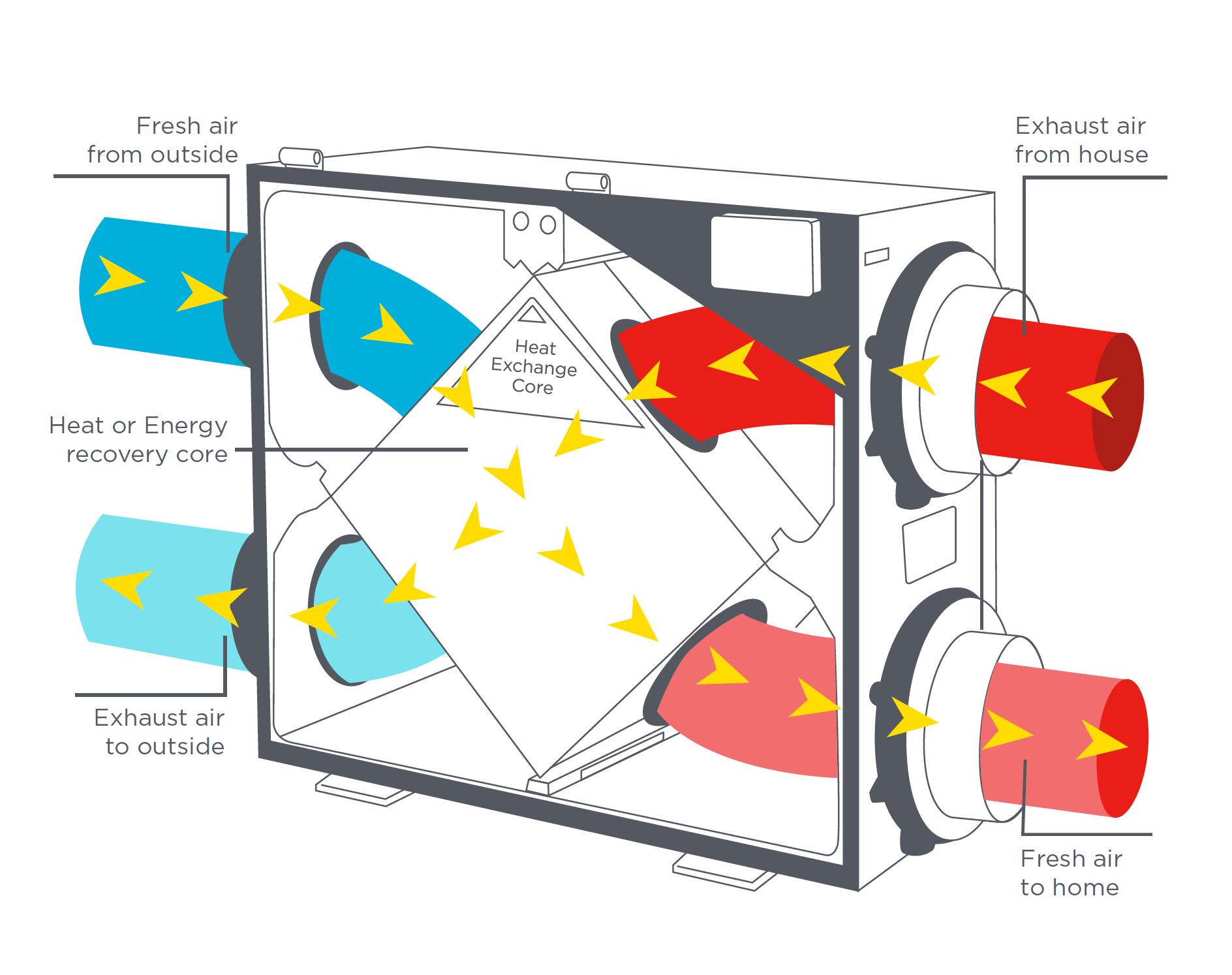
Ventilation for New Homes Efficiency Nova Scotia
Skylight design and ventilation design can really improve the look, feel and atmosphere of your home. Skylights allow natural light to flood into your home, creating a bright and welcoming space. Louvres are an ideal way to bring in fresh air while still keeping out annoying pests like flies or mosquitoes.
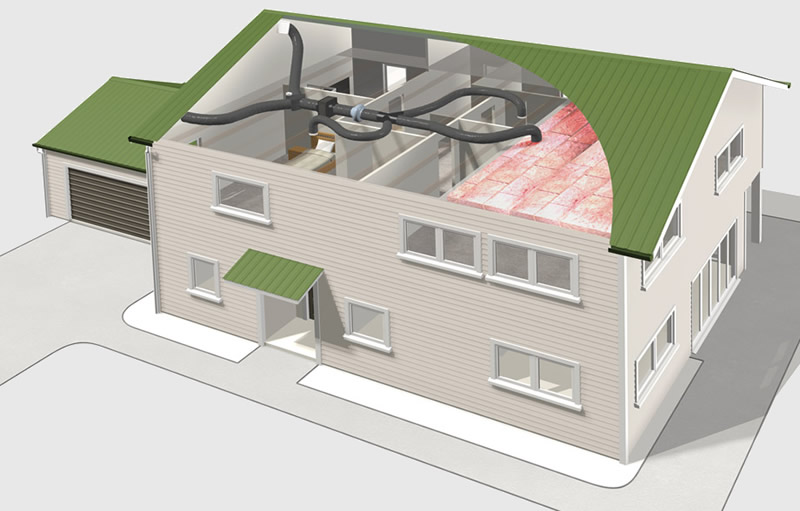
How do home ventilation systems work?
This article explains how to design, buy, and use a whole house ventilation system to improve indoor air quality in homes. We also provide an ARTICLE INDEX for this topic, or you can try the page top or bottom SEARCH BOX as a quick way to find information you need. Whole House Ventilation Strategies for Improving Indoor Air Quality
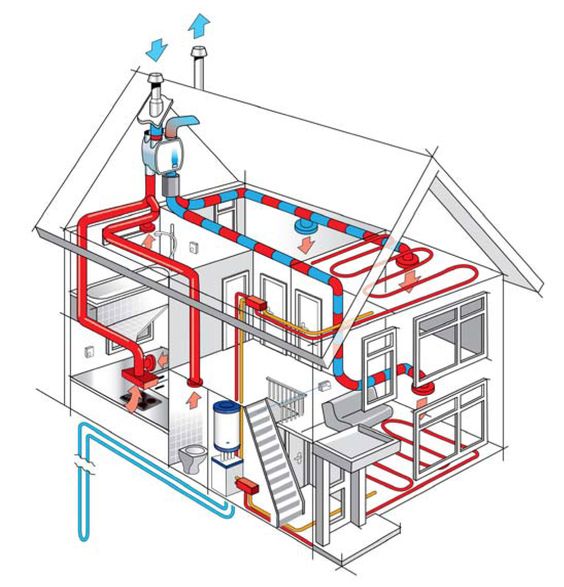
Ventilation Design 4 Steps To Guide Ventilation Procedure Linquip
Ventilation may be defined as the process of bringing in new air to replace old, stagnant air. Ensuring enough air and sunshine penetration is an important part of having a well-ventilated house. Evaluating house ventilation design efficiency In order to assess ventilation efficiency in your house, consider the following factors.

HPH202 Designing the ventilation, heating, and hot and cold water systems for Ben's house
The design of their leg blood vessels is a heat exchanger. Like what we build into homes now.. This ventilation rate for the average house would be 49 cubic meters per hour, or 814 liters per.

Amx fan What is "Wholehouse ventilation System Designs"?
Step1: Choose where you want to ventilate Decide which places of your building need ventilation. Typically, these areas in the house contain the living room, subfloor, and roof space. Suppose you are going to design an efficient ventilation system and make the duct more effective.

“Ideal” Home Ventilation « Green Energy Times
The most controllable home ventilation systems are 'active' with fans to create either positive or negative pressure in the home. Often, carefully designed ductwork is used to balance the system across the building. Whole house mechanical ventilation with heat recovery (MVHR) has become the ventilation 'must-have' for self build.
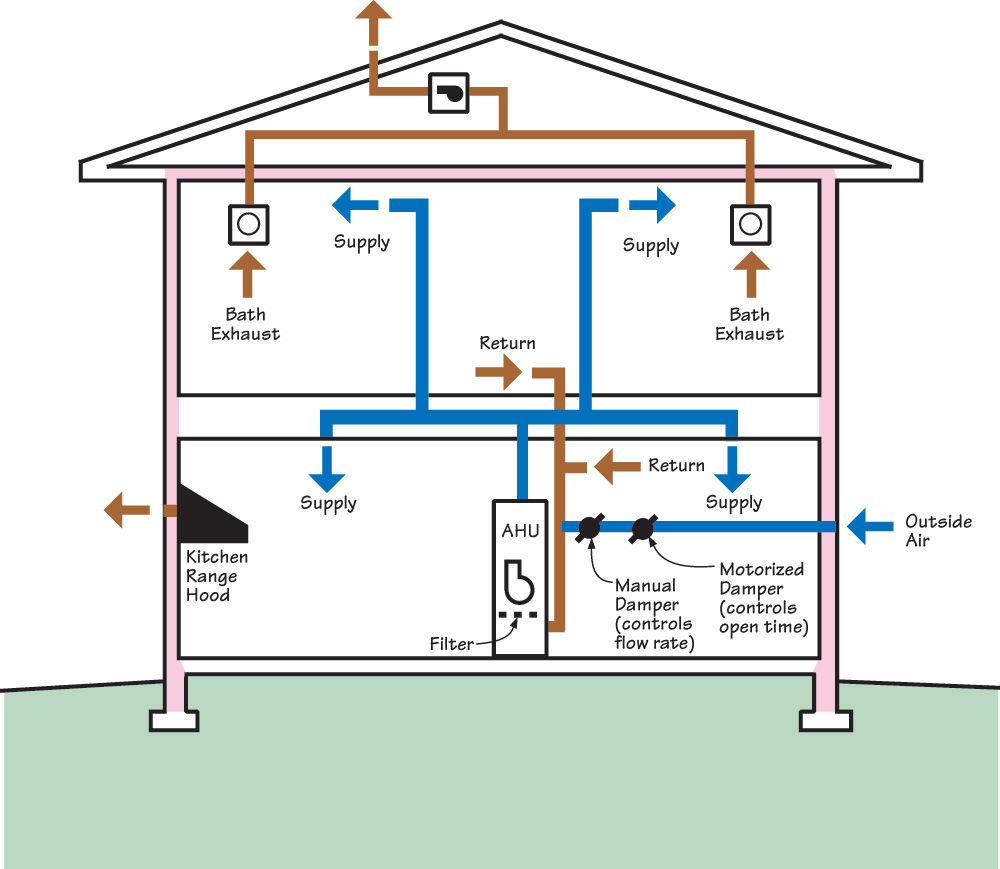
WholeHouse Ventilation Strategies for New Homes Building America Solution Center
Design a whole-house ventilation system that complies with all relevant codes and standards and provides adequate indoor air quality. Preliminary Planning Determine appropriate ventilation rates for the residence. Determine what code or program requirements must be met.
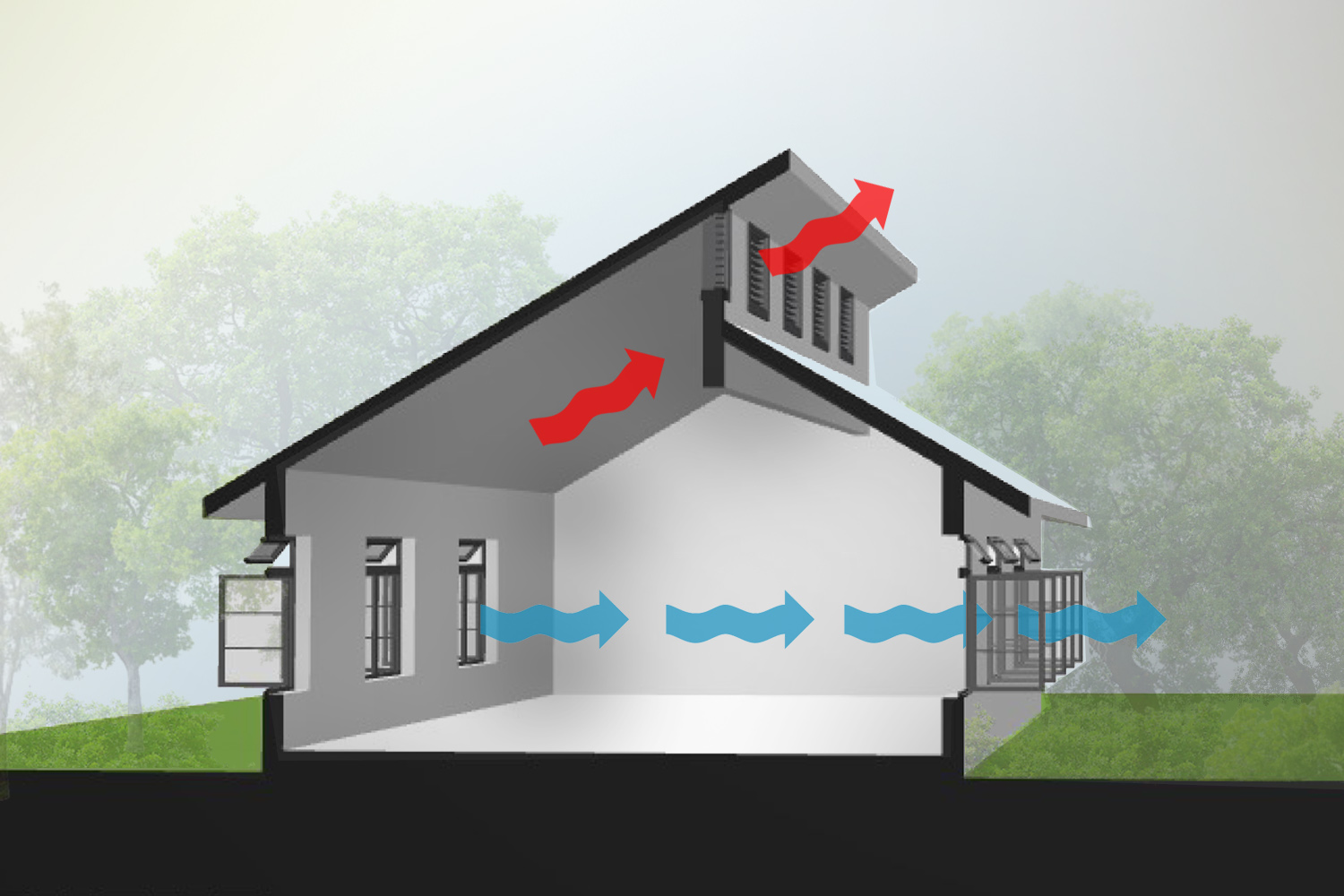
8 Passive Ventilation Strategies For Your Tropical Home Architropics
There are three types of home ventilation: 1. Natural ventilation is uncon-trolled air movement from windows, doors, or cracks in the home. This used to be the most common ventilation method of allowing fresh outdoor air to replace indoor air in a home, and still is found in most older homes. Proper ventilation helps keep a home energy-eficient.

Mechanical home ventilation systems BRANZ Build
1. Pull-Down or Twisty Blinds Blinds are the most common and effective ventilator designs for modern homes. Popular in home ventilation designs, these blinds are easily installed on existing windows, so no renovation is required. They come in a variety of colours so they can match the living room interior decor.
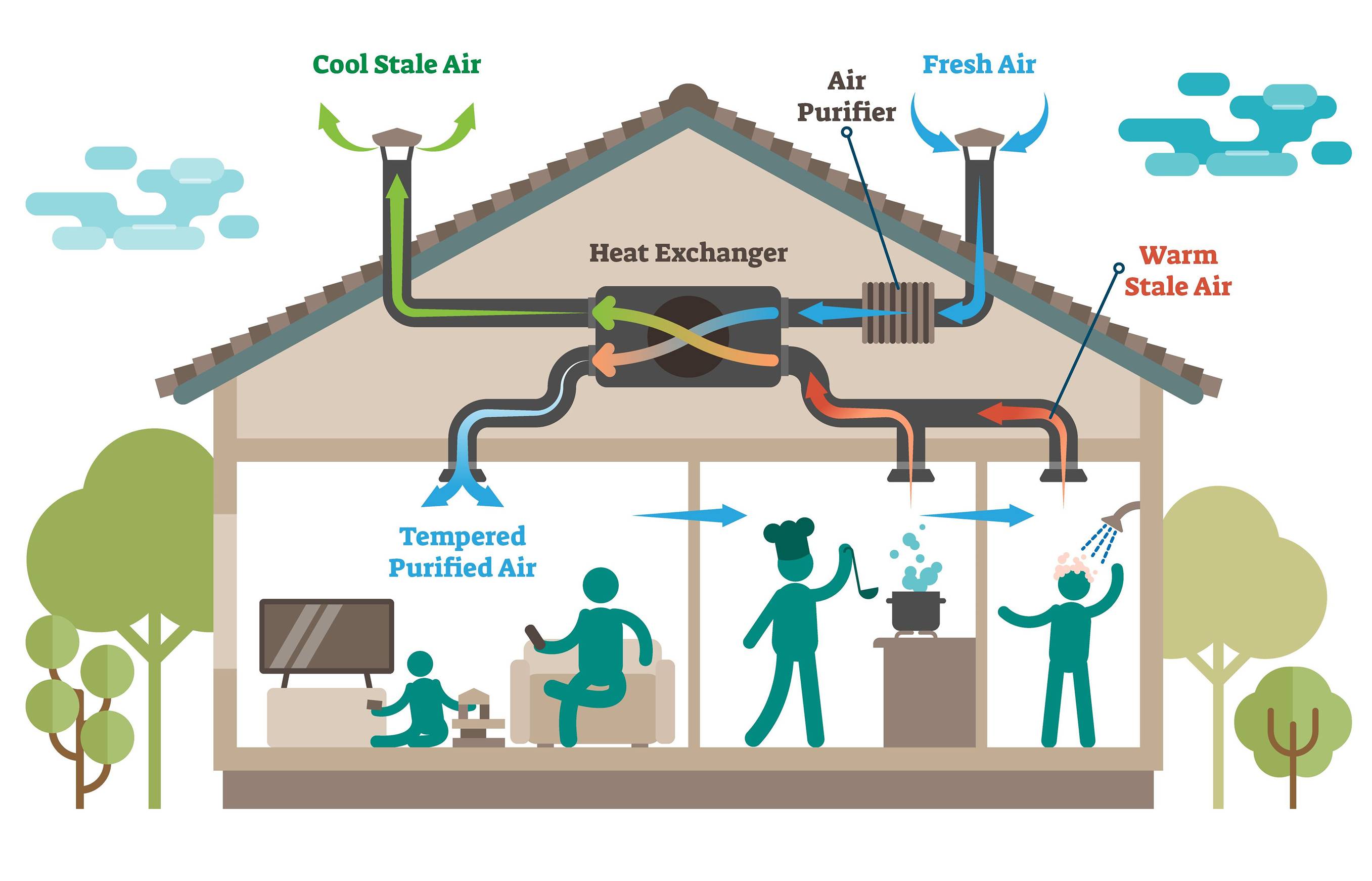
Ventilation System Design HVAC For Residential and Commercial
The best practice for installing an ERV is to hire an HVAC contractor to install the type of ERV that is integrated directly into the home's forced air ductwork. Although this should be done by an HVAC contractor, there are several design considerations you should be aware of when the ERV is installed: The fresh air intake should be located.

Maximum Model 301 Sloped Roof Ventilator in Black The Home Depot Canada
To meet the ASHRAE ventilation requirements mentioned earlier, a three-bedroom, 2000-sq.-ft. house would typically need a system rated at 90 to 100 cfm, according to Brian Ault, a senior design engineer with Positive Energy, a mechanical systems consulting firm. Sensible heat recovery in an HRV averages about 70% (but can be as high as 95%).

Amazing Ventilation Design Building Ventilator Design full Process Cements Sand And
Stack Ventilation. This method uses two types of vents; one at the lower level of your house to let the fresh air in, and one at the roof to remove the stale, warm atmosphere. Fresh air enters your house, and stale air exits with the chimney or stack effect. 2. Spot Ventilation.
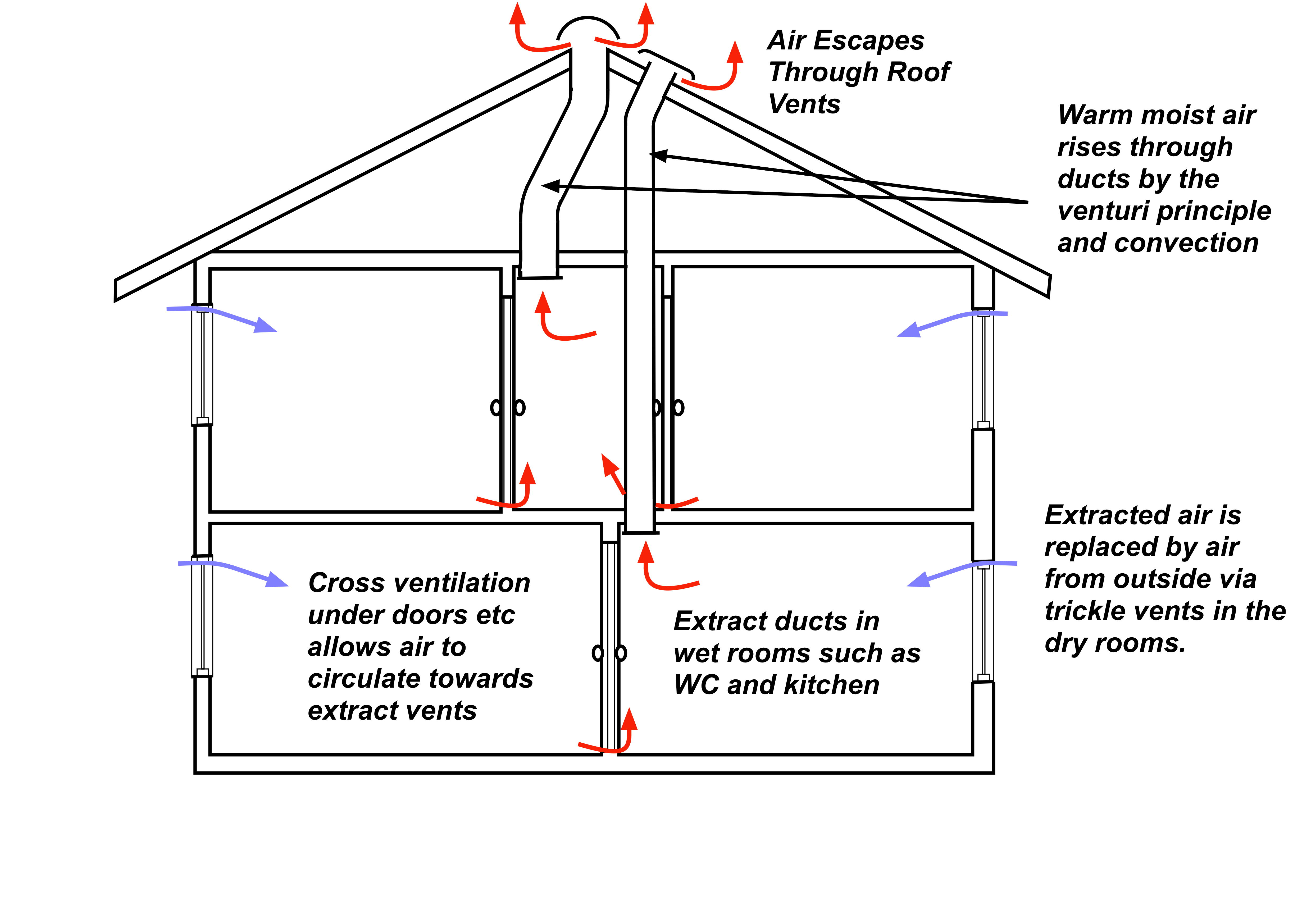
Passive Stack Ventilation Explained
A better design is to connect the fan to ducts from several rooms, preferably rooms where pollutants are generated, such as bathrooms. Adjustable, passive vents through windows or walls can be installed in other rooms to introduce fresh air rather than rely on leaks in the building envelope.
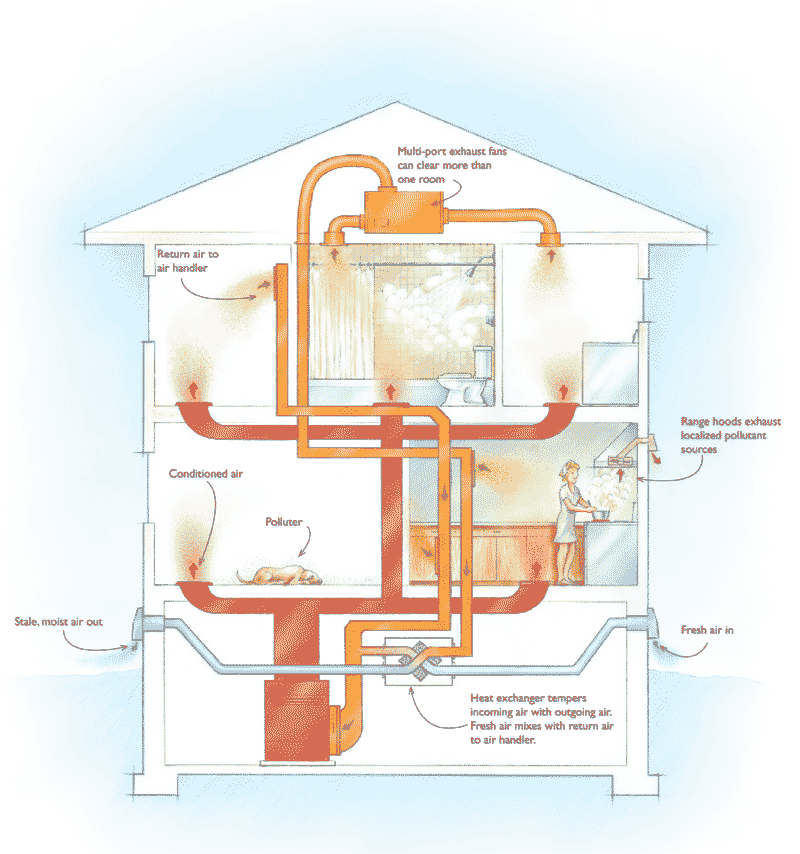
6 Ways to Ventilate Your Home (and Which is Best) BuildingGreen
One approach is to create a solar chimney in which air is heated by the sun, becomes more buoyant, and rises up and out through vents near the top of the building; this lowers the pressure in the house, which draws fresh air in through specially placed inlet ports. The rest of this blog post will focus on mechanical ventilation.

Reasons Why We Need Good Ventilation For Home
a) Natural Ventilation Natural ventilation relies on passive methods to allow fresh air to circulate throughout the house. This method involves using windows, doors, vents, and other openings to facilitate the entry and exit of air. Likewise, it uses prevailing winds and temperature differences to create a comfortable airflow.